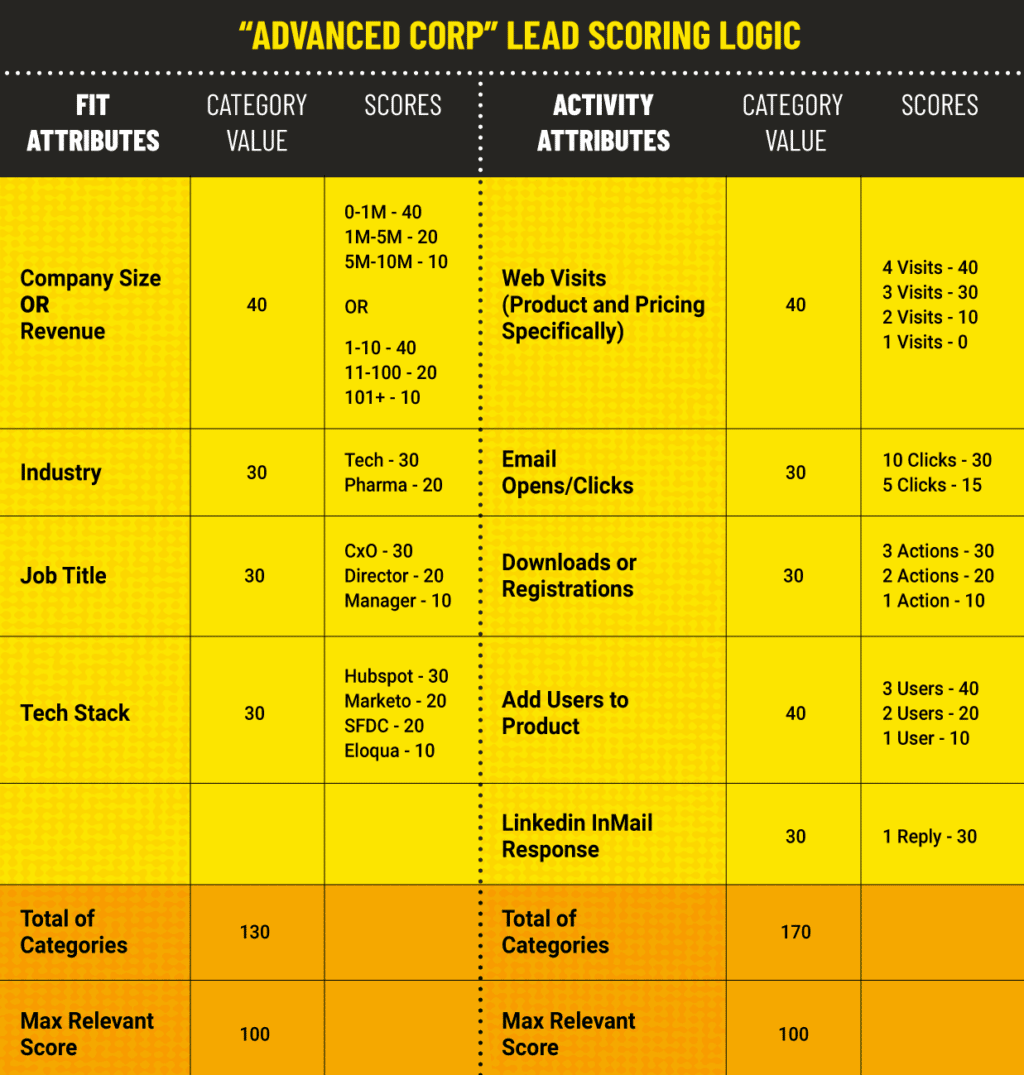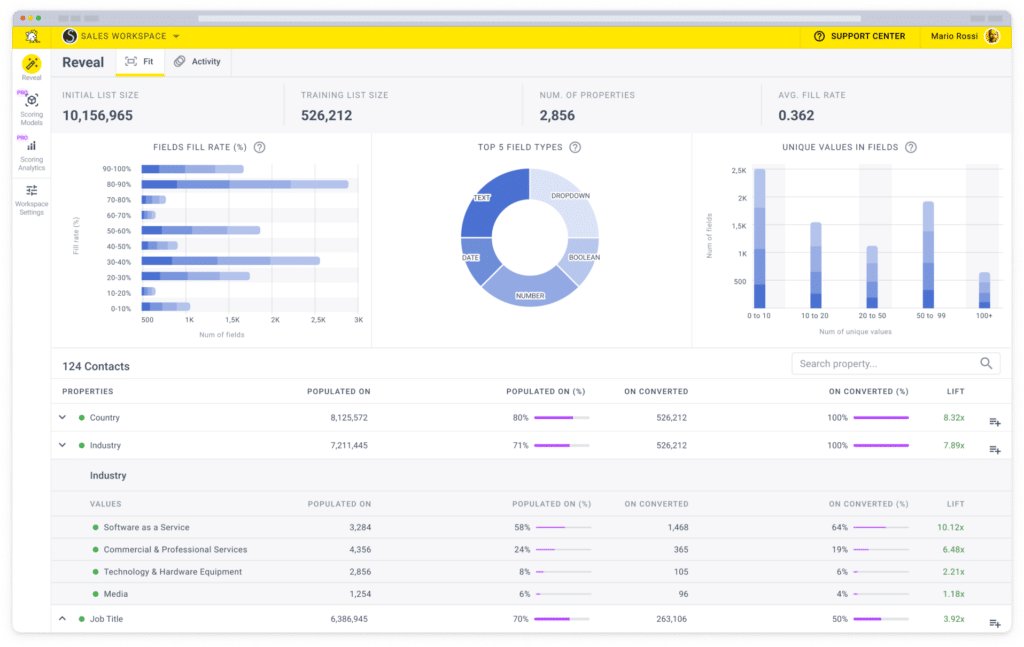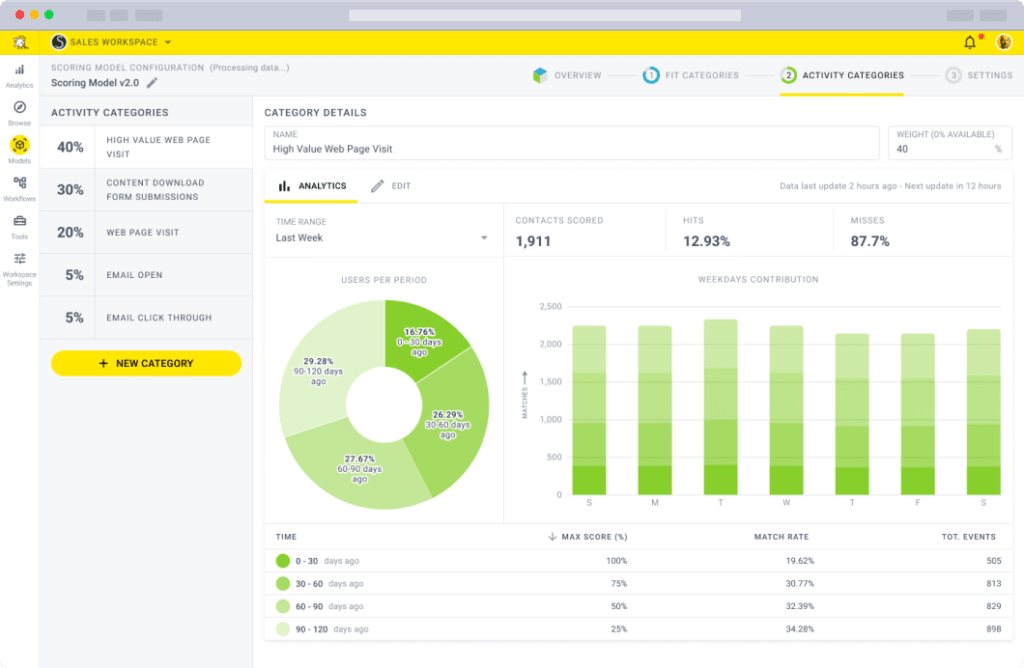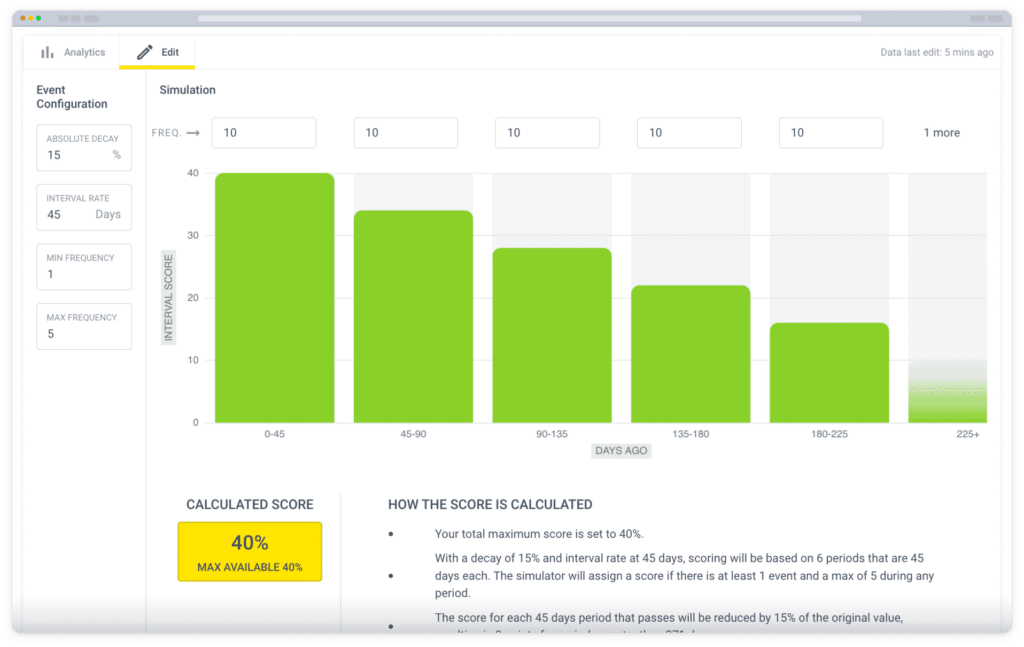Hyper-personalization in B2B lead generation is a new and improved way for B2B companies to generate hot leads that convert.
Unlike traditional personalization, which involves basic elements like addressing leads by their first name, hyper-personalization is about data-driven insights that create a tailored and relevant customer experience to maximize sales, trust, and loyalty.
Hyper-personalization sets the stage for more fruitful interactions between businesses and leads.
In this blog, we’ll cover:
The role of data in hyper-personalization
The success of hyper-personalization relies on data. Through the collection, sales analysis, and interpretation of data, sales teams gain deep insights into the behaviors, preferences, and needs of B2B customers.
This data can encompass various information, including demographics, past interactions, purchase history, and online behavior.
By harnessing this wealth of data with business intelligence tools like Breadcrumbs, you can create comprehensive profiles of prospective customers that allow them to understand each prospect individually.
These insights empower companies to deliver personalized experiences that resonate with the specific pain points and aspirations of each lead.
Linking hyper-personalization to lead scoring
Hyper-personalization and lead scoring are powerful allies in optimizing lead generation efforts, as they work in tandem to create a more refined and effective approach to lead management.
Lead scoring traditionally relies on a set of predefined criteria to rank leads based on their potential to convert.
However, when combined with hyper-personalization, this process becomes significantly more nuanced and precise.
You can fine-tune your lead-scoring models by leveraging a data-driven understanding of leads. Now, you consider explicit criteria like job title or company size and more subtle indicators, such as engagement with specific content, browsing behavior, and interaction history.
This data-driven approach ensures high-value leads are accurately identified and prioritized, enabling sales and marketing teams to allocate their resources properly.
Hyper-personalization complements lead scoring by tailoring the content and communication directed towards each lead based on context.
For instance, a lead indicating strong purchase intent is suited to receiving personalized product recommendations and in-depth case studies. In contrast, a lead with a lower score may benefit from educational content that addresses their pain points.
The latter is crucial because 96% of visitors who visit your website aren’t ready to buy yet and need nurturing. Tools such as Breadcrumbs Reveal help you create a data-driven Ideal Customer Profile (ICP).
With Breadcrumbs Reveal, organizations gain deep insights into their customer base. That way, you can craft a more accurate and refined ICP based on comprehensive data analytics.
Breadcrumbs Reveal also integrates data-driven ICP insights into revenue-related goals, like:
- Acquisition
- Upselling
- Cross-selling
- Churn reduction
Through advanced lead scoring models, Breadcrumbs Reveal surfaces valuable intent signals within the data. The result? You can identify high-potential leads with the utmost precision.
Not only can your organization target new prospects more effectively, but you can also tailor your approach for existing customers, enhancing cross-selling and upselling opportunities.
By identifying and addressing churn signals in real time, Breadcrumbs Reveal aids in reducing customer attrition and bolstering retention efforts. It’s the perfect catalyst for hyper-personalization across the entire customer lifecycle.
Deploying data-driven strategies for hyper-personalized lead generation
Deploying data-driven strategies for hyper-personalized lead generation involves a systematic 10-step approach that elevates your B2B marketing efforts.
Step 1: Data collection and aggregation
Start by utilizing lead generation tools by gathering relevant data about your target audience—such as demographics, firmographics, online behavior, and past interactions.
Leverage multiple sources, such as CRM data, website analytics, and third-party data providers, to build a comprehensive dataset.
Step 2: Data cleansing and validation
Guarantee the quality and accuracy of your data by regularly cleansing and validating it. You must improve your data quality to maintain data integrity.
Step 3: Creating data-driven ICPs
Implement a data-driven ICP using tools like Breadcrumbs Reveal.
Then, leverage data analytics to identify patterns and attributes that define your most valuable customers. This process helps you pinpoint characteristics that indicate a lead’s potential to become a high-value customer.
To speed up your IPC creation, use our free template.
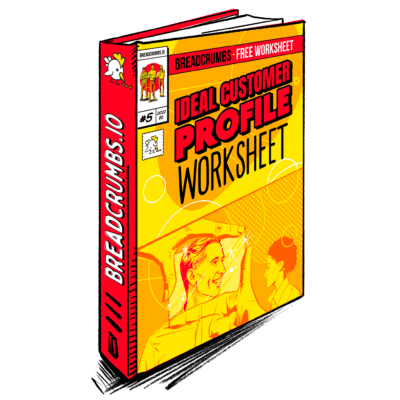
Ebook
Ideal Customer Profile (ICP) Worksheet
Learn how to create an Ideal Customer Profile and build a successful sales strategy with this Ideal Customer Profile (ICP) Worksheet.
Step 4: Segmentation
Understanding your specific market segments is crucial. Otherwise, it’s like throwing spaghetti at the wall and hoping something sticks.
Take, for instance, the rise of RV rentals in Phoenix. By analyzing user data and search patterns related to this niche, travel agents can tailor their marketing strategies to capture the growing interest in this sector, ultimately driving more qualified leads.
A segmented approach helps you target the right audience with the right message at the right time. In mass mailing, for instance, you may be familiar with this process as one of the most important mail merge steps, which can be time-consuming but rewarding. Bringing in the best leads and improving your bottom line is a no-brainer.
Step 5: Predictive analytics
Utilize predictive analytics to forecast lead behavior and preferences.
Predictive models can help you anticipate which leads are more likely to convert, enabling you to allocate resources effectively.
Step 6: Create personalized content
B2B buyers are bombarded with brand messages from all corners of the internet. It’s confusing and hard to filter out the noise. That’s where personalized content shines like the North Star.
Why? We all crave something that speaks directly to our search intent.
So, customize your digital content creation strategy to address each segment’s unique needs and challenges effectively. This content may include tailored emails with catchy subject lines, whitepapers, webinars, and product recommendations.
Step 7: Marketing automation
Implement marketing automation tools to deliver personalized content at the right time and through preferred channels. Automation allows you to scale hyper-personalization and has many benefits, with 34% of marketers reporting increases in leads.
Step 8: A/B testing and optimization
Continuously test and optimize your hyper-personalized campaigns. A/B testing helps you refine your messaging, timing, and content for maximum impact, so 60% of companies believe it’s highly valuable for conversion optimization.
Step 9: Measurement and analytics
Track key performance indicators (KPIs) and web analytics, such as conversion rates, engagement metrics, and revenue generated from hyper-personalized campaigns.
Analyze the results to understand what works best for each segment and make data-driven adjustments accordingly.
Step 10: Iterative improvement
Hyper-personalization is an ongoing process. Use the insights from your campaigns to refine your data-driven ICPs, predictive models, and personalization strategies.
Adapt and respond to changes in the market and lead behavior.
Best practices for implementing data-driven strategies for hyper-personalized
Implementing data-driven, hyper-personalized lead-generation strategies requires a careful balance of best practices and understanding potential challenges.
Here are some best practices to keep in mind along the way.
Content mapping
It’s essential to map personalized and relevant content to the individual user.
That’s where video commercials can help. It’s widely known that using short videos attracts and maintains consumers’ attention and improves trust and loyalty.
Likewise, in B2B marketing, commercial video production is a great way to convey your brand message to other businesses while inspiring a call to action. Similarly, you can leverage product reviews, testimonials or client stories, promotional videos, and more to highlight the benefits of working with your company and make your commercial video feel more human.
If you don’t have the budget to produce a commercial video, don’t worry. Adding an AI slide maker to your tech stack can help you achieve similar results. Consider using one of the best AI presentation maker, which is a great way to quickly create content to grow your business.
The goal? Show the faces behind your brand. It’s a surefire way to build a stronger connection with your audience. Product photography can also be a powerful tool to showcase your products in a visually appealing way, adding an extra layer of personalization to your content.
Lead score optimization
Building a lead scoring model isn’t a fix-it-and-forget-it task. You must continuously refine your lead scoring model based on the success and conversion rates of past leads.
For best results, keep the scoring factors that align with current business objectives and toss out the ones that don’t.
Continuous market research
Stay vigilant with market research to identify emerging trends and shifts in customer behavior, allowing you to adapt your personalization strategies throughout a customer’s lifetime.
Challenges and future trends surrounding data-driven strategies for hyper-personalized
Implementing data-driven customer experience and hyper-personalized lead generation strategies doesn’t come without its challenges.
- Technology integration. Many B2B businesses use multiple systems for data storage, marketing automation, and analytics, making it difficult to create a seamless data ecosystem. To address this challenge, invest in integration platforms and work towards a centralized data repository to ensure data flows smoothly.
- Scaling personalization. As your business grows, maintaining the same level of personalization becomes more complex. The solution? Invest in AI and machine learning technologies that automate personalization at scale, making it more manageable as your customer base expands.
- Privacy concerns. Customers are increasingly sensitive about how their data is used. Communicate your data usage policies transparently, obtain consent, and strictly follow regulations.
Future trends of B2B hyper-personalization
The future of hyper-personalization in B2B lead generation promises to be exciting and transformative.
AI and machine learning
AI and machine learning will play an even more central role. As mentioned, these technologies will enable businesses to analyze vast amounts of data with unparalleled accuracy and speed, facilitating the creation of highly nuanced customer profiles and predictive models for lead behavior.
AI helps with cost savings, too. For example, in inventory optimization, B2B businesses can use AI to determine replenishment policies and allocation strategies.
Real-time personalization
As AI and machine learning algorithms evolve, they’ll empower organizations to deliver real-time personalization, responding to lead interactions instantly with tailored content and recommendations.
Real-time personalization is poised to become the norm, ensuring that each lead receives the most relevant information precisely when needed, which can only increase customer retention.
Conversational marketing
With the rise of chatbots, conversational marketing should play a pivotal role in your marketing campaigns. B2B organizations can use conversational AI to engage leads through natural language interactions and provide instant responses to inquiries.
A worthy investment, given that one reply in a chat widget can increase conversion by 50% and a second by 100%.
Personalized communications
Using email marketing platforms to create hyper-personalized cold email outreach is an integral part of B2B lead generation, with 82% of marketers enjoying better open rates through email personalization.

However, the email signature is often overlooked. A personalized email signature is a subtle yet impactful way to ensure prospects that your message is genuine and worth their attention. You can either create one from scratch or use an email signature template to create one for you.
Data-driven hyper-personalization: A B2B lead generation game-changer
As you adapt and respond to these evolving trends and challenges, you’ll set yourself up to create highly personalized and effective lead-generation campaigns.
The result? Building stronger connections with leads. Converting those leads into paying customers. Boosting your bottom line. What’s not to love?
Here’s to taking your hyper-personalization to the next level. You won’t regret it. And neither will your customers.


